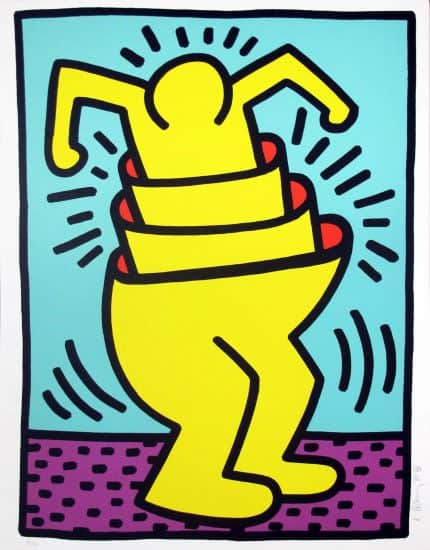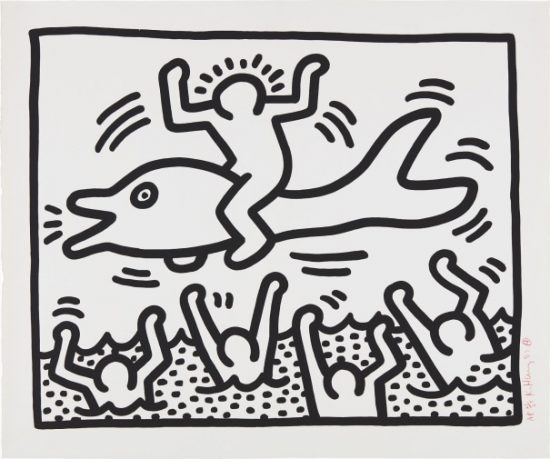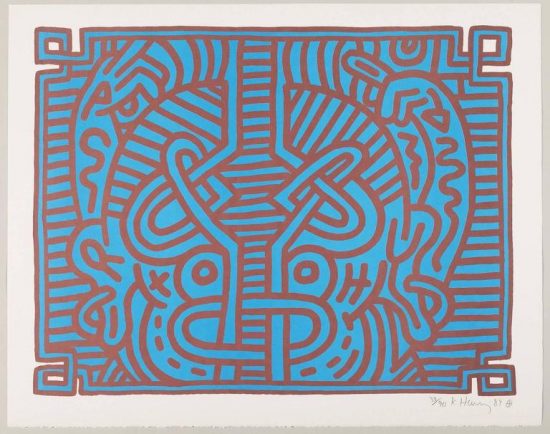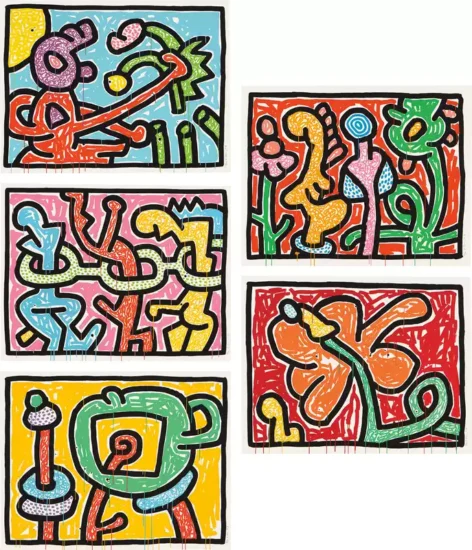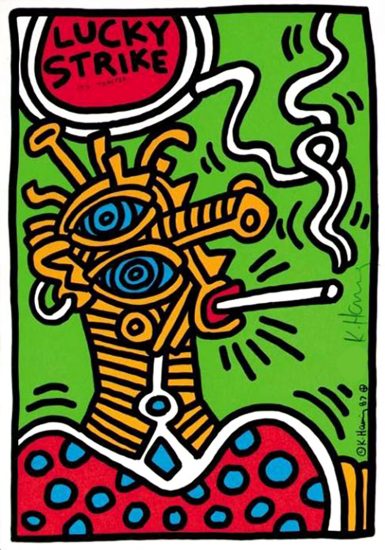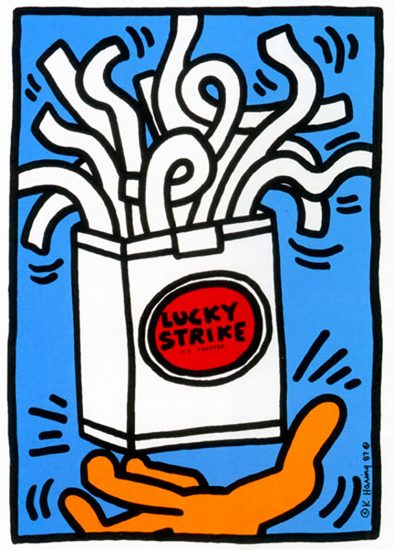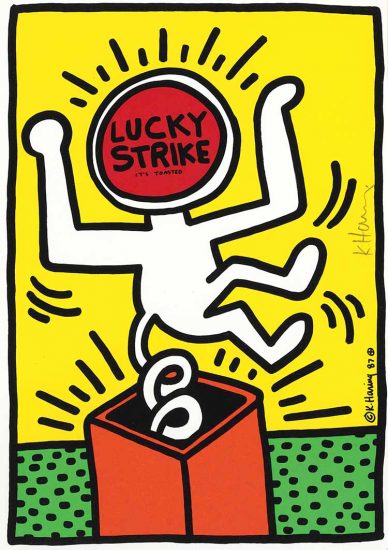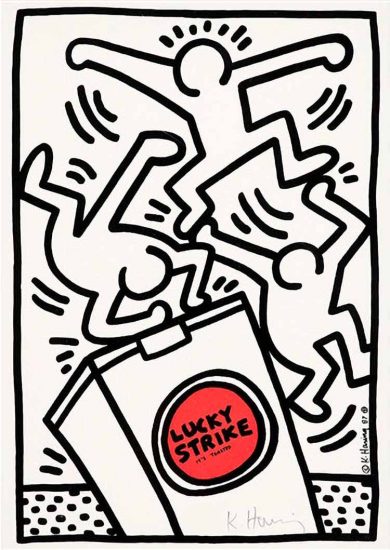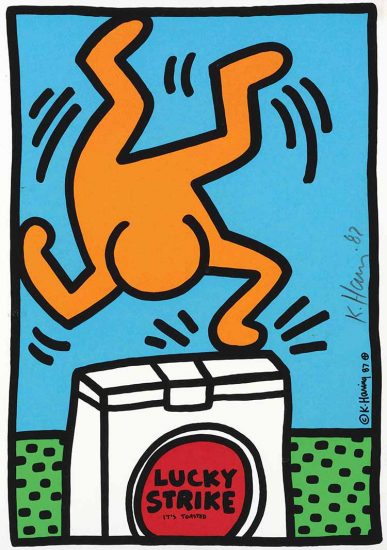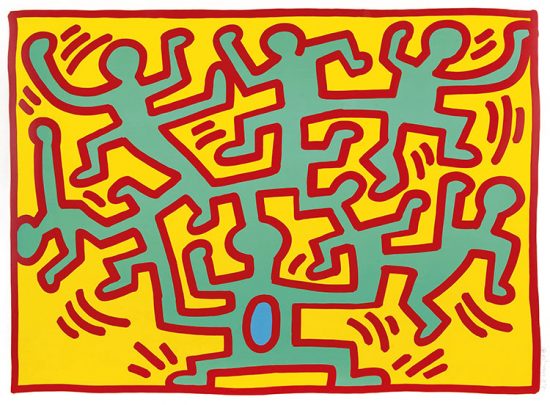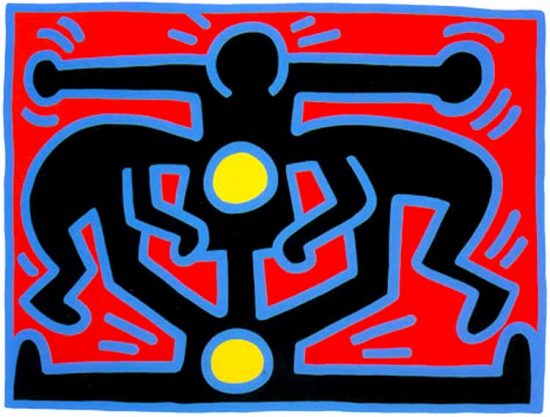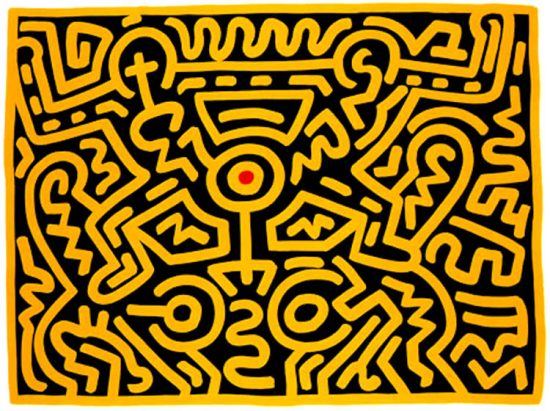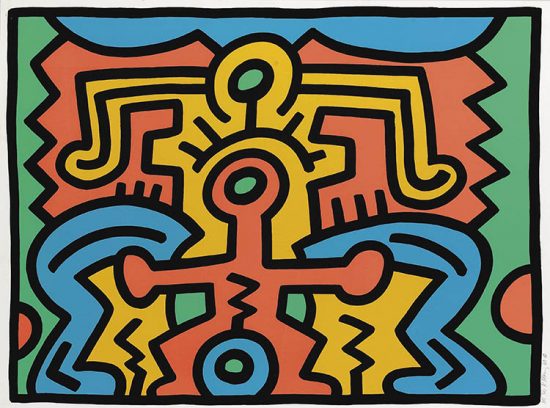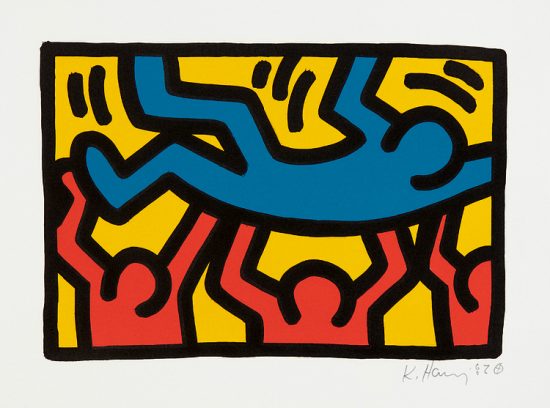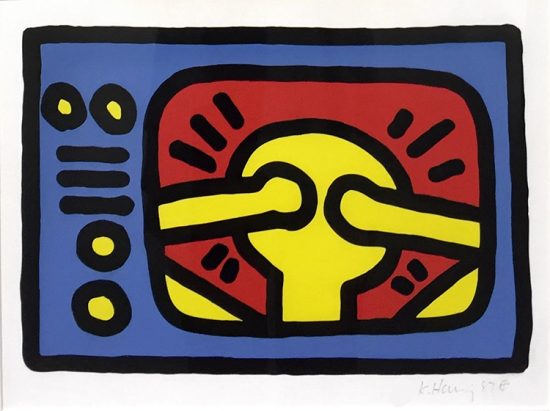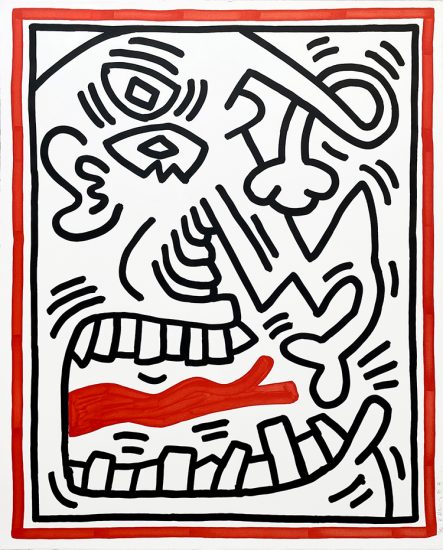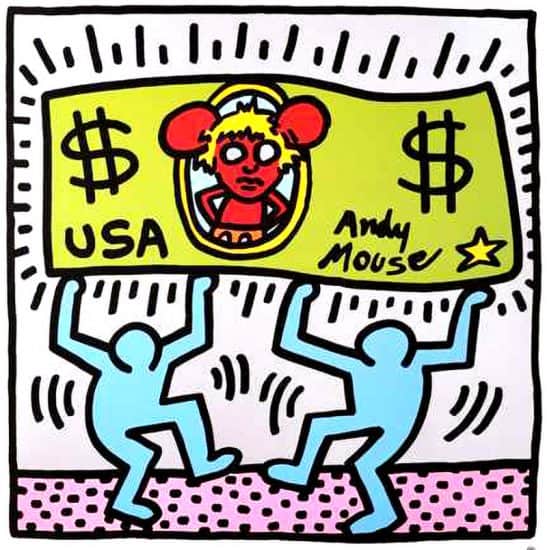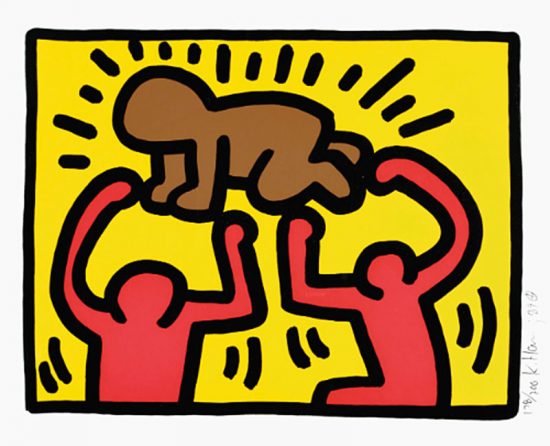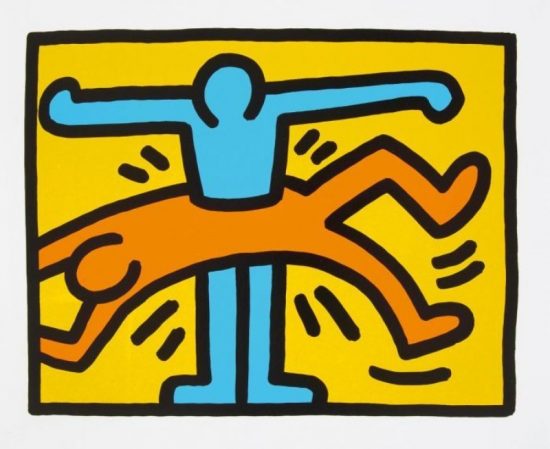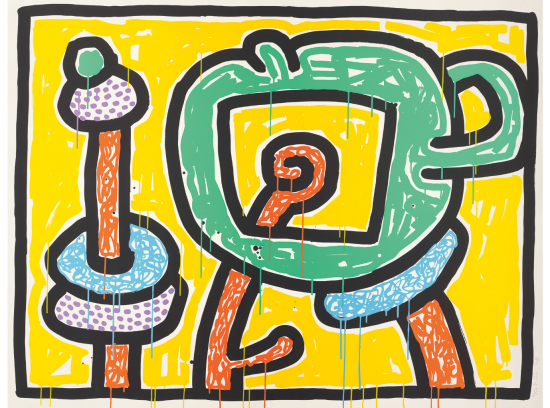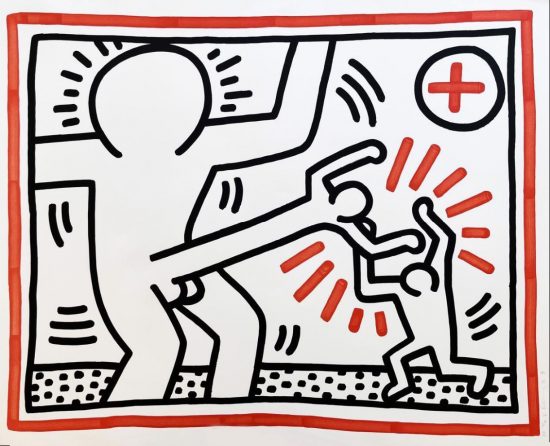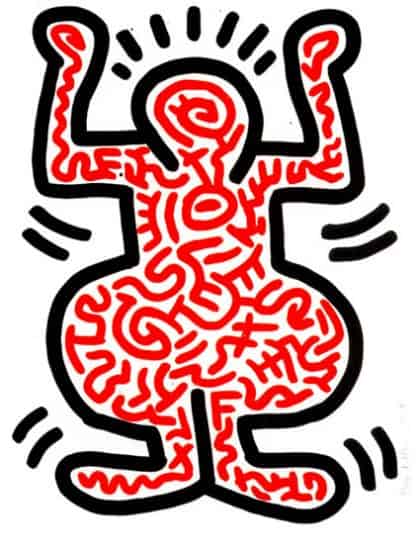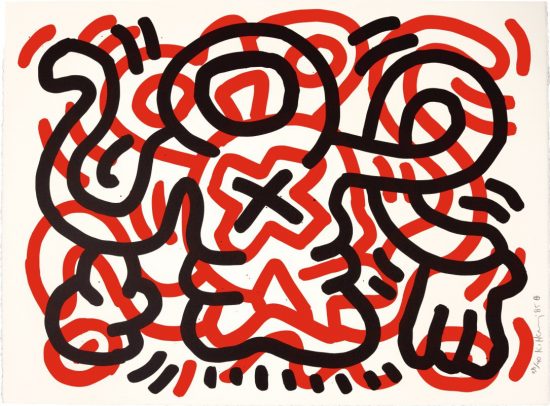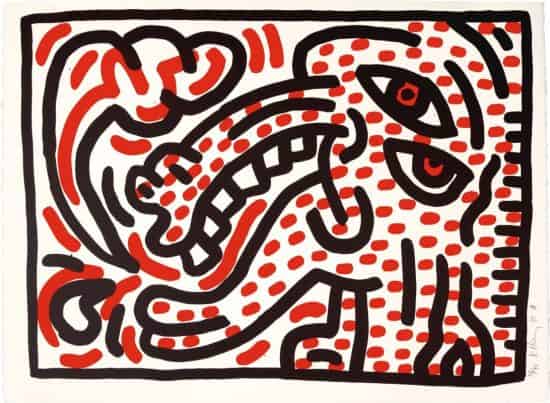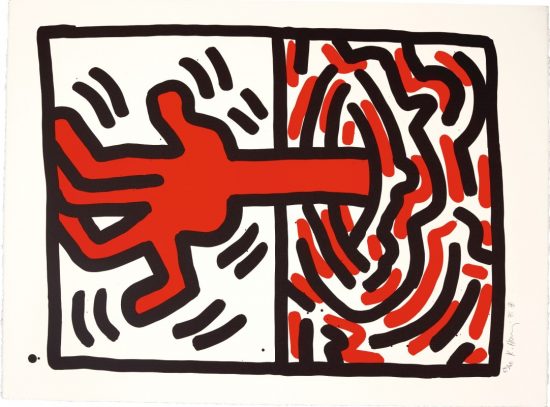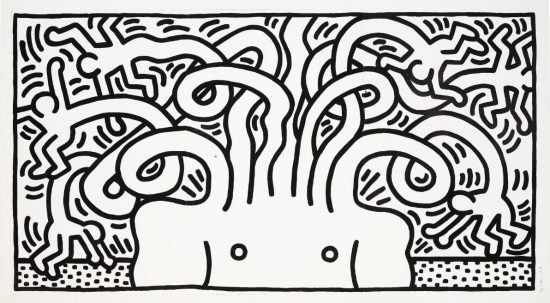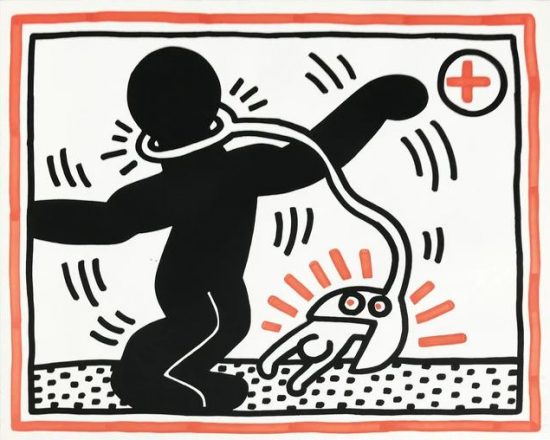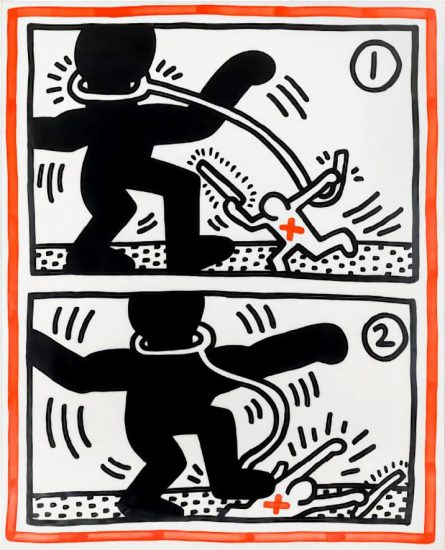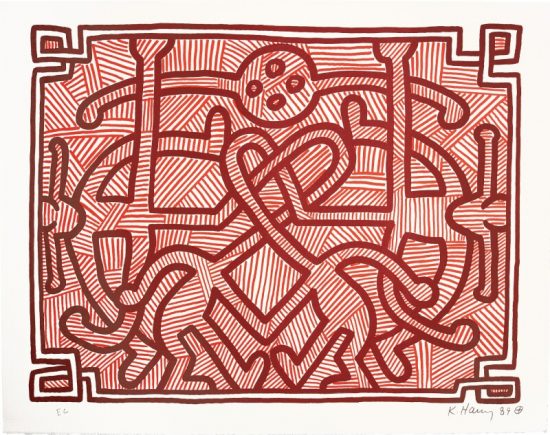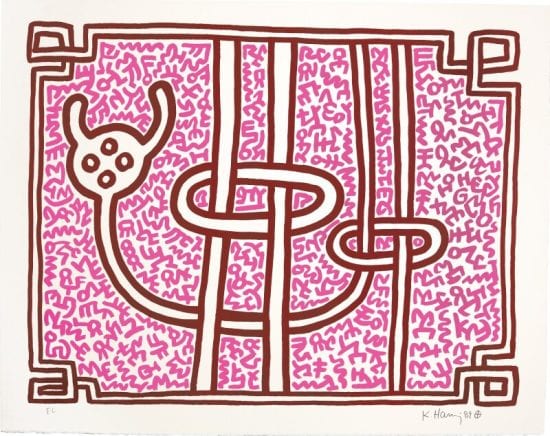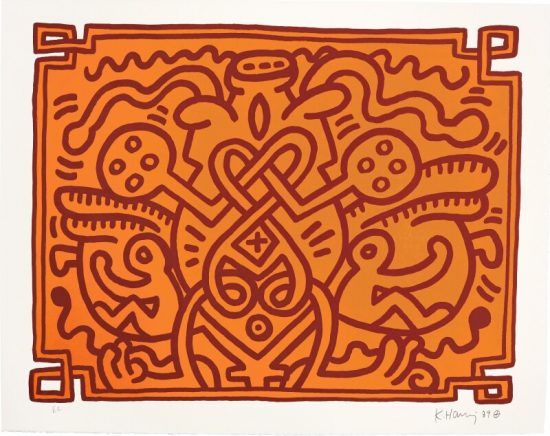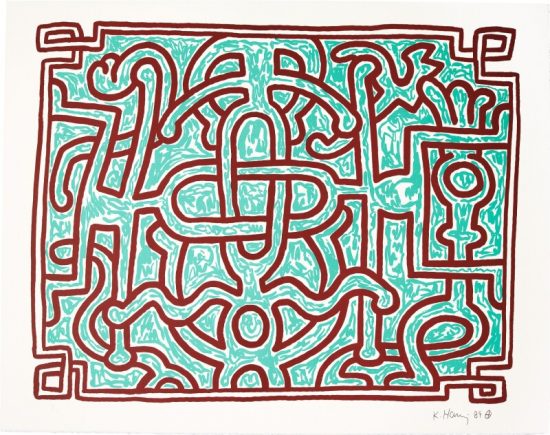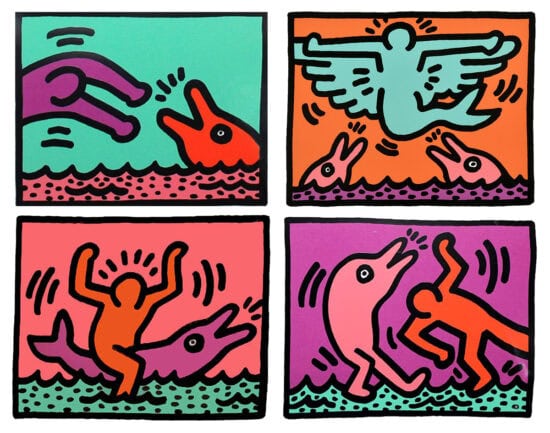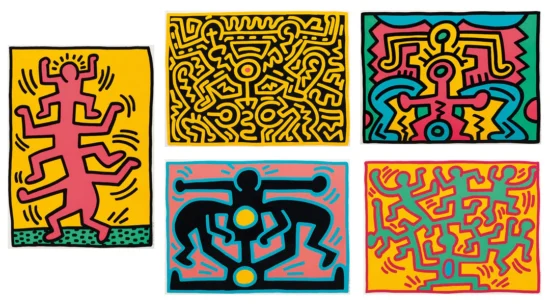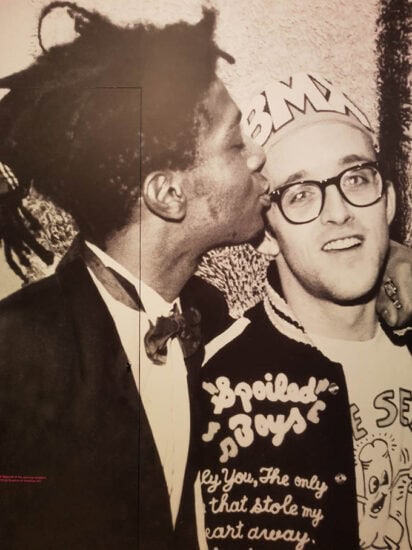"Keith Haring: The Political Line" was a major retrospective exhibition of the artist's work that was organized by the Musée d'Art Moderne de la Ville de Paris in 2013. The exhibition featured over 250 works by Haring, including paintings, drawings, sculptures, and installations, and it provided a comprehensive overview of the artist's career and his political and social activism.
The exhibition was divided into several thematic sections, including Haring's early graffiti work, his political and social commentary pieces, and his collaborations with other artists and musicians. The show also included a number of Haring's large-scale murals, which were recreated in the exhibition space, providing viewers with a sense of the immersive and transformative power of the artist's work.
One of the highlights of the exhibition was a room dedicated to Haring's work on the AIDS crisis. This section featured a range of powerful and moving works, including paintings, sculptures, and installations, that addressed the devastating impact of the epidemic on the gay community and on society as a whole. Haring was a vocal and active advocate for AIDS awareness and research, and his work played a significant role in raising public awareness about the disease.
Another important section of the exhibition was dedicated to Haring's collaborations with other artists and musicians. This section featured works that Haring created with artists such as Jean-Michel Basquiat and Kenny Scharf, as well as collaborations with musicians such as Madonna and Grace Jones. Haring was a prolific collaborator, and his work with other artists and musicians helped to push the boundaries of contemporary art and popular culture.
The exhibition was attended by a range of famous people from the worlds of art, music, and entertainment. One of the most notable attendees was the artist's sister, Kay Haring, who helped to organize the exhibition and was instrumental in preserving and promoting her brother's legacy. Other attendees included Madonna, who was a close friend and collaborator of Haring's, and who wrote a tribute to the artist for the exhibition catalog.
The exhibition was also attended by a number of prominent art world figures, including curators, critics, and collectors. One of the most influential curators in attendance was Dieter Buchhart, who curated the exhibition and who has been a major force in promoting Haring's work in recent years. Other notable attendees included Marc-Olivier Wahler, the director of the Palais de Tokyo, and Philippe Vergne, the director of the Museum of Contemporary Art in Los Angeles.
"Keith Haring: The Political Line" was a groundbreaking exhibition that helped to cement Haring's reputation as one of the most important and influential artists of his generation. The exhibition showcased the breadth and depth of Haring's work, and it highlighted his commitment to using art as a tool for social and political change. Through his bold and colorful imagery, Haring challenged viewers to confront pressing social issues, such as AIDS and nuclear disarmament, and he inspired a generation of artists and activists to use their work as a means of effecting positive change in the world.
Haring's legacy continues to inspire new generations of artists and art enthusiasts, and his work remains as relevant and powerful today as it was during his lifetime. "Keith Haring: The Political Line" was a fitting tribute to an artist whose work continues to captivate and inspire people all over the world, and it helped to ensure that his legacy will endure for generations to come.

